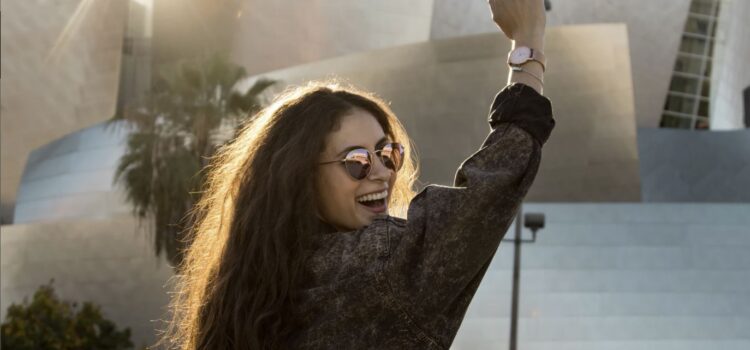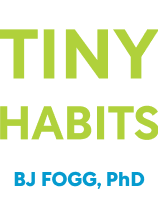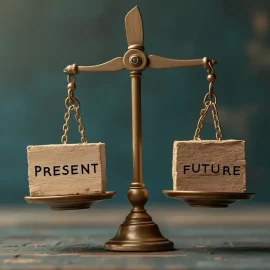

This article is an excerpt from the Shortform book guide to "Tiny Habits" by BJ Fogg. Shortform has the world's best summaries and analyses of books you should be reading.
Like this article? Sign up for a free trial here .
How do you make a new Tiny Habit stick? What kind of Tiny Habit celebrations are the most successful? What are the different types of celebrations?
A core part of developing a new Tiny Habit is celebration. Celebrating successes causes the release of dopamine that makes you experience pleasure and helps lock in the habit.
Continue on to learn more about how celebrating successes helps you develop new habits.
Why Celebrating Successes Is So Important in Habit Formation
Consciously celebrating successes allows you to harness powerful brain networks to your new habit.
The brain network we’re “hacking” through Tiny Habits is the reward system. This system has evolved over millions of years to keep us alive, healthy, and safe.
Whenever you feel good, your brain notes and reinforces the actions you performed to get there. This means that experiencing pleasure helps you to encode new behaviors. When you experience pleasure (or, more specifically, an outcome that yields a “reward prediction error,” in that the outcome was better than you expected), your brain releases a shot of dopamine. This dopamine helps to lock in the habit.
Characteristics of a Great Celebration
A great celebration is immediate and timing is key.
It’s also authentic. The celebration feels natural to you—perhaps it’s already something you do when you’re feeling triumphant. It should easily tap into a genuine feeling of Shine (Fogg’s word for the feeling of “authentic pride”).
Types of Success Celebration
Most celebrations fit into a few categories: physical movements, words, songs, sound effects, and visualizations. Some celebrations combine a few categories.
For example, one Habiteer, Mike, invented the following celebration for the Tiny Habit of rolling out his yoga mat every day: He paced back and forth next to the yoga mat, singing Eye of the Tiger at the top of his voice and holding his arms triumphantly above his head in imaginary boxing gloves. (When a bemused postman passed by his window one day, Mike realized that this particular celebration worked better with the curtains drawn.)
Here are some suggestions for celebrations in each category. They come from examples throughout the book, as well as from an Appendix that offers 100 suggested celebrations.
Physical movements: Strike a pose or make a movement that makes you feel joyful and triumphant.
* Do a happy dance (the floss dance, a few belly dance moves, a stylish spin).
* Drum out a jaunty beat on a nearby surface.
* Smile.
* Clench your biceps and kiss them.
* Thump your fist against your heart.
* Give yourself a fist bump, blowing up both fists.
* Jazz hands.
* Do an elaborate bow.
* Wave and blow kisses like a celebrity.
Words: Say a positive affirmation, either aloud or in your head.
* “Nailed it!”
* “Great job!”
* “Yes!”
* “I’m great at forming new habits.”
Songs: Sing, hum, or whistle a snatch of a song that makes you happy.
* Celebration — Madonna
* Eye of the Tiger — Survivor
* You Sexy Thing (I Believe in Miracles) — Hot Chocolate
Sound effects: Play these on your phone or imagine them.
* A crowd going crazy
* A round of applause
* A fanfare
Visualizations: Be creative.
* Imagine getting a hug from someone who cares about you
* Imagine your best friend smiling at you
* Imagine you have a tail and wag it happily like a dog
* Imagine you’re surrounded by a pure white aura
* Imagine fireworks exploding
Of course, context is important. You don’t want to have an Eye of the Tiger celebration for the habit of contributing an intelligent point in a work meeting. A repertoire of possible celebrations that you know will reliably generate Shine works best.
Finding Your Best Celebration
Success celebrations have personalities: Some are more introverted (a quiet head nod) while others are very extroverted (a silly pose or dance). You may be more drawn to subtle expressions or you may prefer very dramatic ones. Choose whatever gives you easiest access to Shine.
Everyone—even the most modest or gruff among us—has a celebration. If you’re struggling to find yours, imagine the following three scenarios. What do you do after each?
- You get an email telling you that you’ve been hired for your dream job.
- You’re in the office. You crumple up a piece of paper you’re finished with and lob it towards the recycle bin from across the room. Swish!
- You’re watching a championship and your favorite team is playing. The scores are tied. Your team scores right on the buzzer and wins the trophy.
The “Power Celebration”
Develop at least one celebration with extra oomph. You can use this to feel intense Shine when you need to get a habit under your belt quickly. Fogg’s Power Celebration is imagining his strict, beloved fourth-grade teacher putting her hand on his shoulder and saying “Good job!”
Children are often better at celebrating and feeling intense emotions than adults. Think of some times you felt an intense sense of accomplishment as a kid. Does invoking these memories make you feel strong Shine?
Be sparing with how often you use your Power Celebration, as the intensity can wear off with frequent use.

———End of Preview———
Like what you just read? Read the rest of the world's best book summary and analysis of BJ Fogg's "Tiny Habits" at Shortform .
Here's what you'll find in our full Tiny Habits summary :
- How you can successfully create new habits that stick
- Why you don't need motivation, just science
- Why even flossing one tooth should be considered a victory






